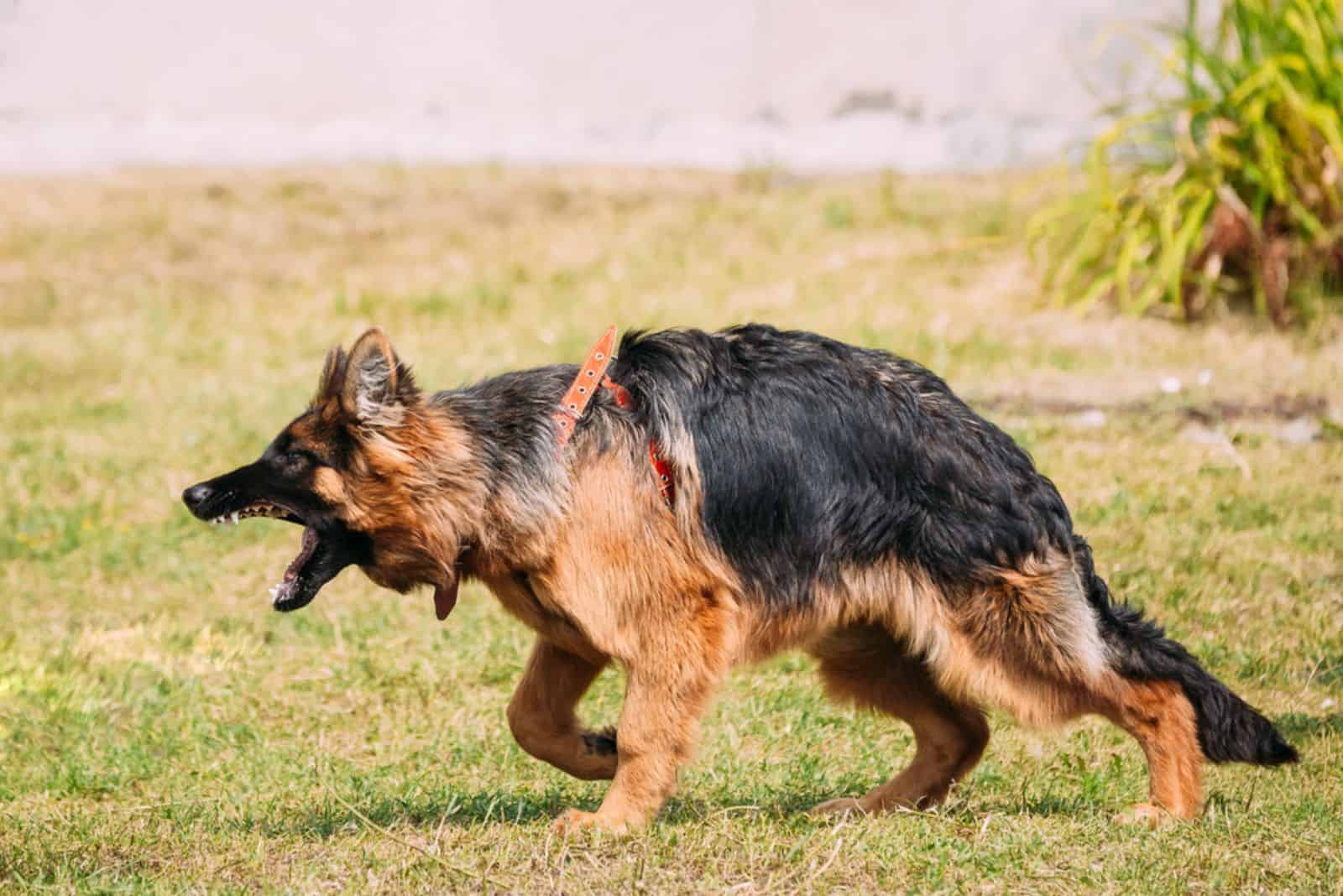Recognizing German Shepherd signs of aggression is quite difficult at times as these are not the most predictable dogs in the world. Unlike Chihuahuas, Labs, or Goldies – these German beauties are rather reserved, laid-back, and calm.
Still, there are some pretty obvious signs of aggression that any GSD owner should be aware of. Aside from the standard barking and biting, there are some more aggression signs that you could learn from before your dog turns into an aggressive beast!
The purpose of this article is to list, explain, and later on, propose basic steps towards anti-aggressive behavior in a German Shepherd puppy, so my advice is to spare a couple of minutes and enjoy the piece!
German Shepherd Signs of Aggression
The truth is these canines belong to the club of aggressive dog breeds.
However, an aggressive German Shepherd dog breed is never a matter of nature, but choice. That’s right! These canines are highly unlikely to display any sort of undesirable behavior as long as you subject them to proper training.
GSDs require early socialization and obedience training as these canines don’t possess a natural level of socialization, such as Labradors or Golden Retrievers.
They are rather working dogs that enjoy completing tasks given by their humans. Unless occupied, stimulated, and trained – GSDs are most likely to be frustrated and destructive.
There are times when these purebred canines use their body language to display aggressive behavior. Instead of using direct violence, here are five most obvious signs that your GSD puppy is about to attack!
1. Growling And Snarling
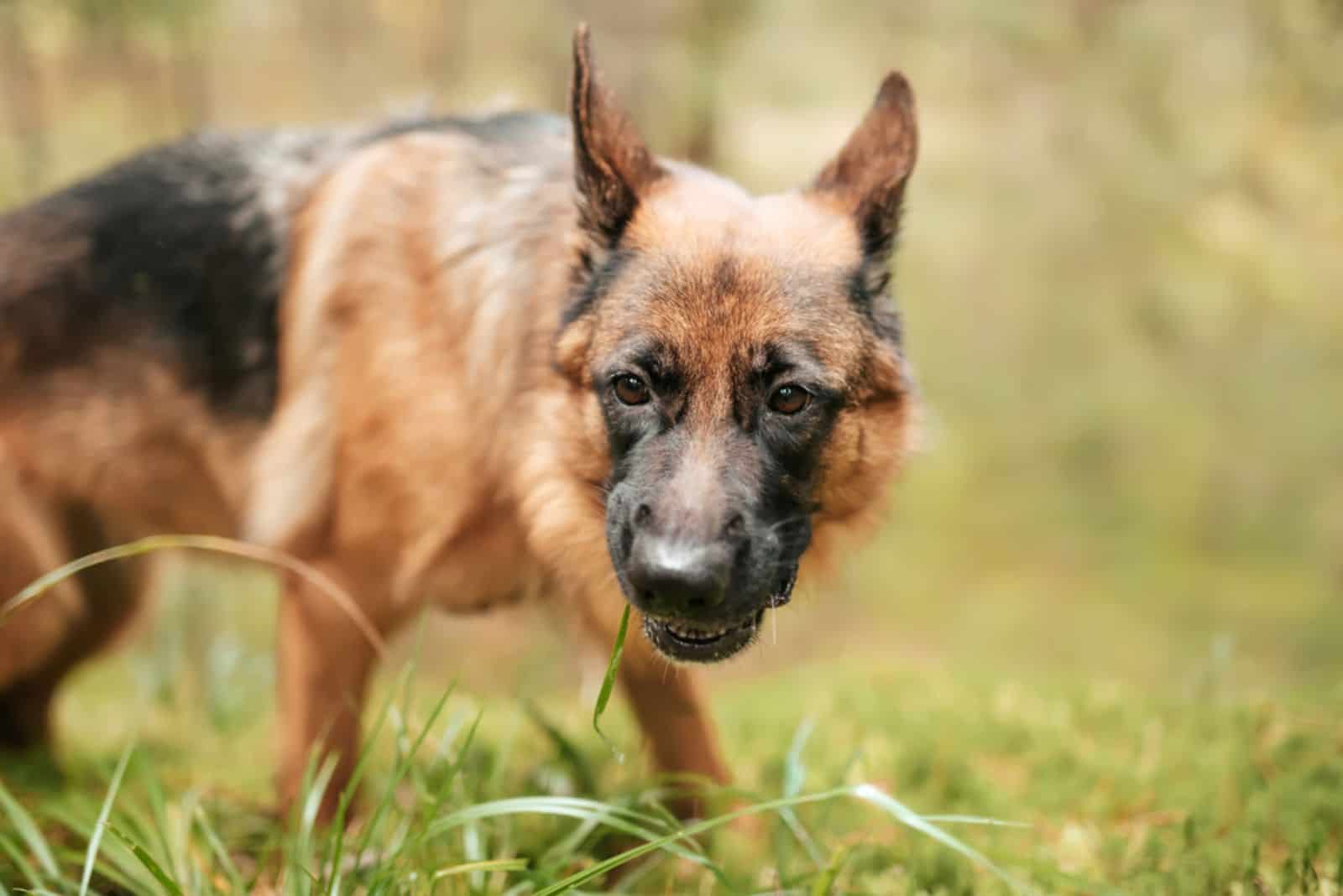
The ‘‘why dogs growl’’ dilemma is one of the most common in the canine world. There are a plethora of reasons for dog growling and snarling, but the most obvious is aggression!
That’s right. All puppies, including German Shepherd puppies, growl as a warning sign towards an enemy or a predator.
Vocalization is a primary communication tool of any guard dog, including GSDs. Even dogs at a young age are highly likely to bark, growl, or snarl when being aggressive towards humans, other dogs, or other animals.
That being said, you should be on alert once you see your GSD growling or snarling. If you notice other accompanying signs, such as a hard stare or lack of movement, one thing is for sure – your GSD is about to attack!
2. Hard Stare
Aggression in dogs never comes in the most predictable manner. Quite the contrary – most dogs have their own unexplainable way of expressing aggressive tendencies. That said, the GS dog’s aggression is often expressed by a hard stare at someone (or something).
A hard stare is generally a part of the GSD’s body language, which they use at times of alert or caution. However, the majority of GSDs are using the hard stare to either scare off an enemy or as a pre-attack behavioral pattern.
These are generally cautious and vigilant dogs that don’t have the friendliest attitude towards other animals or other dogs. In fact, GSDs that lack socialization and obedience training are most likely to be aggressive towards other family members, too.
3. Standing Still
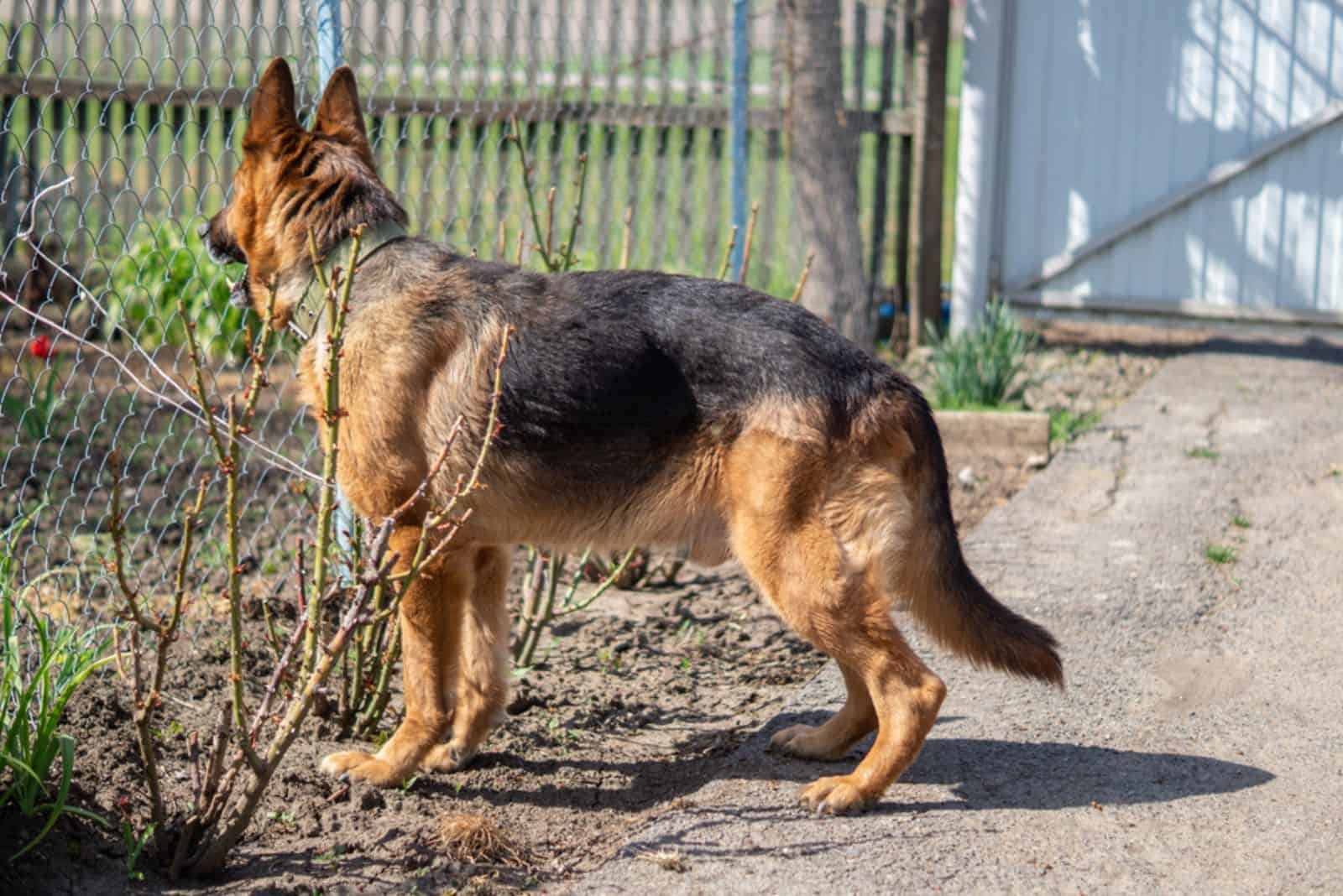
Aside from biting, lunging, or barking, many GSD puppies are ‘‘frozen’’ before they’re about to attack.
A frozen posture is one of the most common German Shepherd signs of aggression, and it usually happens as a result of major fear or trauma, which is the main trigger for aggression in most dogs.
Generally, GSDs are not aggressive if they are properly nurtured and trained, but even these puppies can have major phobia. One of the most common fears in these dogs comes from loud noises, unknown environments, and strangers.
In order to avoid these behavioral outbursts in your GSD, try not to impose any major changes all of a sudden. GSDs are animals of habit as they don’t like sudden changes of any sort.
4. A Tucked Tail
Unlike Rottweilers or Pit puppies – GSDs use their tail to express violent attitudes. Any full-blooded GSD displays a tail tucked between its hind legs prior to attack.
This is a major sign of aggression in GSDs, which is why you shouldn’t bother your dog when you come across this common phenomenon.
Generally, GSDs do this kind of movement when they feel nervous or submissive. Aggression that derives from nervousness or fear can be fatal as afraid dogs attack to defend themselves, and they usually don’t stop until they make sure they’re safe.
In order to avoid this sort of behavior, you should give your GSD a safe, nurturing environment where it can move freely and without any fear.
Prior to socialization and obedience training, an owner needs to gain the trust of his puppy, even if you have purchased your dog from a reliable breeder.
5. Ears Pricked Forward
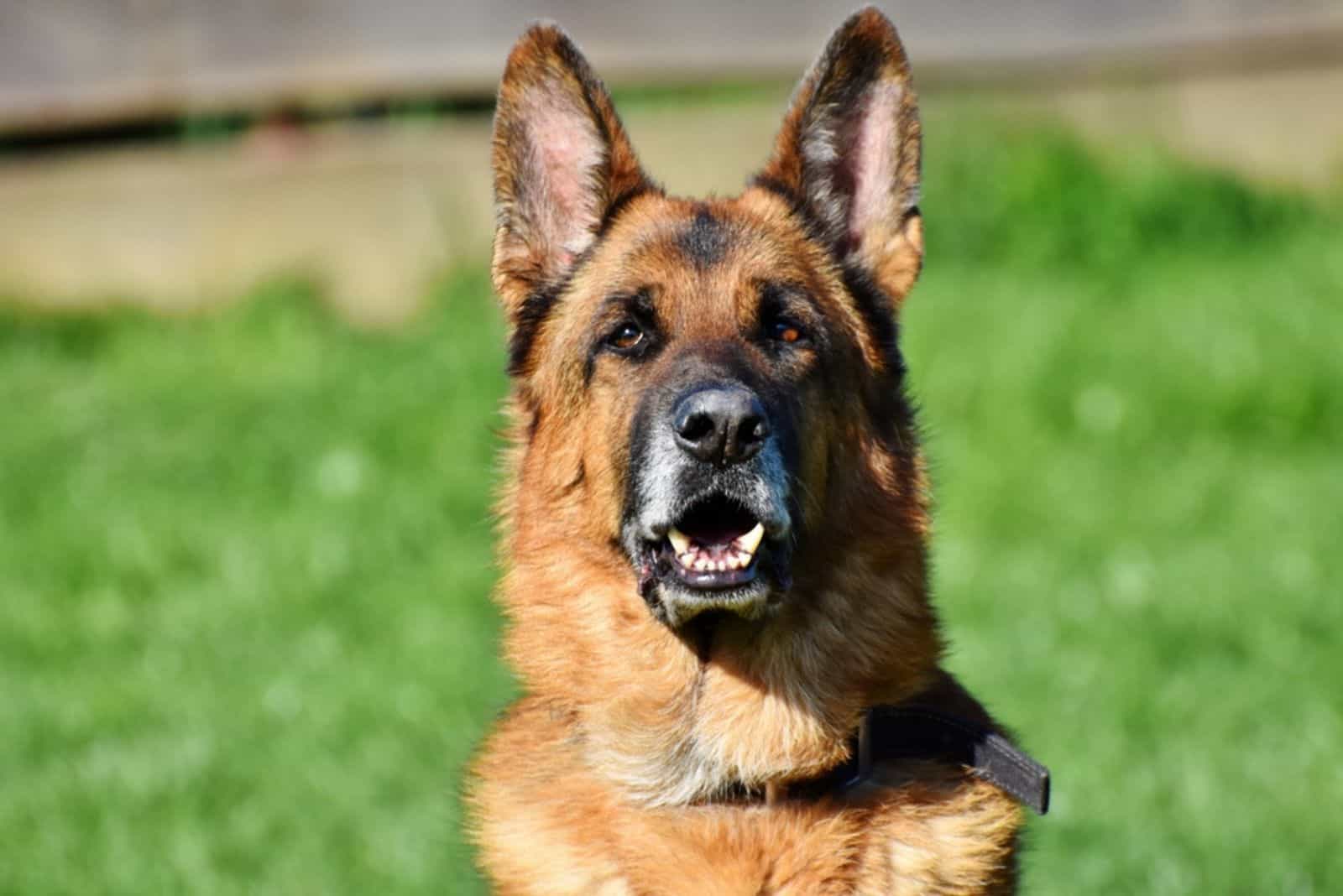
The GSD ear chart is an interesting field of study. These canines have long, erect ears that transmit their inner emotions. That being said, puppies that have ears pricked forward are generally telling that they are about to attack.
These canines use their ears to communicate with their owner from an early age.
A GS dog’s behavior can be predicted by the position of its ears as puppies with loose or straight ears are known to be friendly and relaxed, while dogs with pricked-forward ears are generally anxious and aggressive.
What Causes German Shepherd Aggression
There are a plethora of things that cause aggression in a German Shepherd puppy. Most of the time, these canines are aggressive due to improper upbringing and socialization.
Owners who encourage occasional nipping or biting may find it cute in the beginning, but what they don’t realize is that GSDs apply this as a behavioral pattern in the future.
On the other hand, extreme fear and phobia are commonly grounded in German Shepherd signs of aggression. Just like humans, GS dogs are capable of having a specific phobia, such as a phobia of closed spaces, other dogs, loud noises, insects, and so on.
Here are some other causes of aggression in these German beauties…
1. Trauma
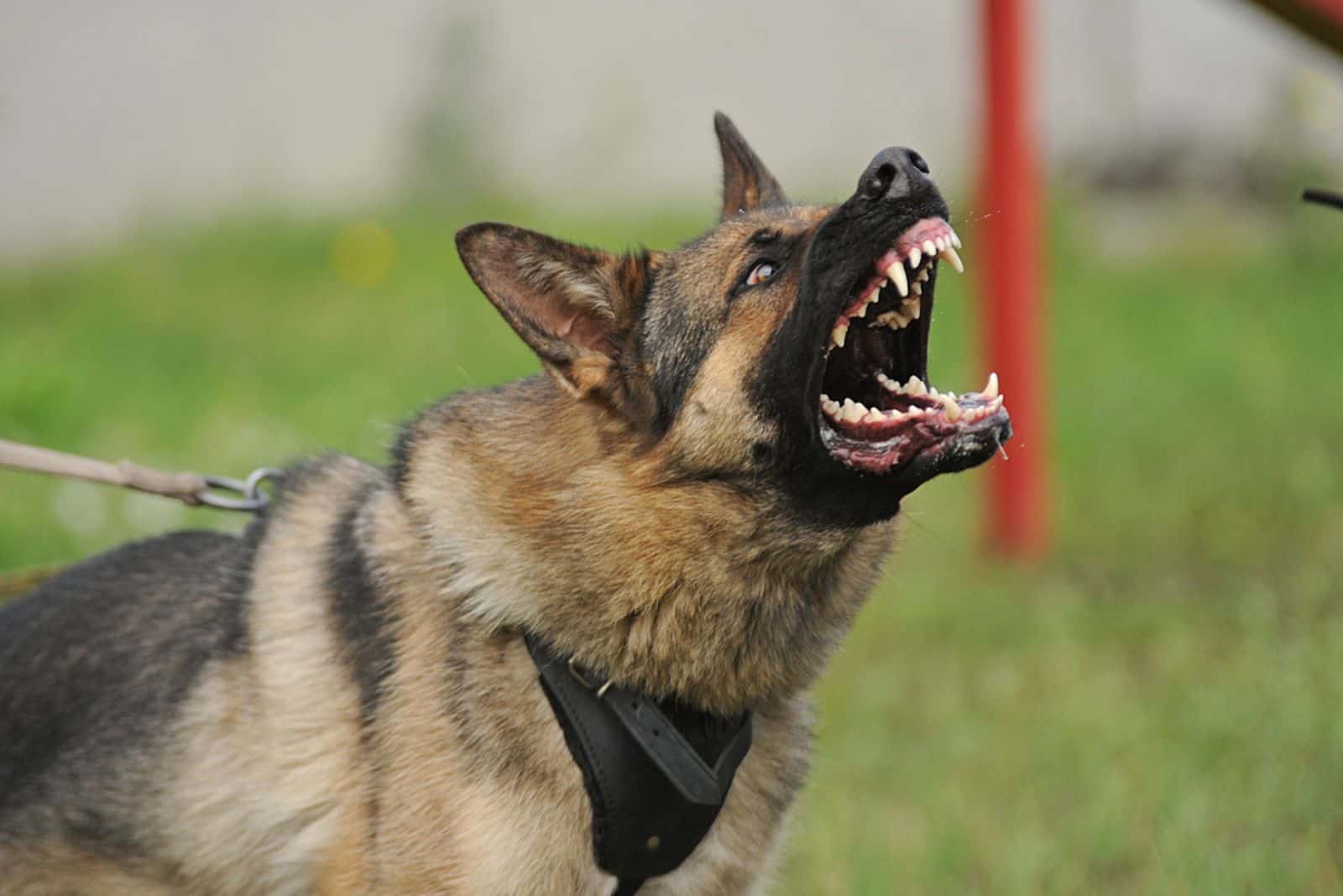
Both male and female GSDs are prone to traumas, which is why you should prepare your dog’s environment prior to purchase. These canines generally don’t stand loud spaces, nor small, narrow spaces where they cannot express their full potential.
On the other hand, puppies that have suffered some serious injury or a health problem are prone to developing long-term trauma. Before you label your puppy’s aggression as an underlying medical condition – look for symptoms of trauma!
Furthermore, puppies that didn’t receive a proper amount of mental stimulation or positive reinforcement from their previous owner are highly unlikely to be loyal dogs.
Quite the contrary… improperly-parented dogs have a tendency to be untrustworthy and aggressive.
2. Bad Parenting
Bad parenting goes hand in hand with the aforementioned trauma. These canines are debatable when it comes to first-time dog owners as they generally require firm leadership and an experienced owner.
GSDs that lack proper dog training are highly likely to express various types of aggression, including direct attack. In fact, labeling the type of aggression is a secondary thing that you do after you determine the cause.
This is due to the fact that GS dogs are naturally aggressive, and they respond accordingly.
Unless taught and trained otherwise – these canines are not exactly the friendliest breed.
3. Separation Anxiety
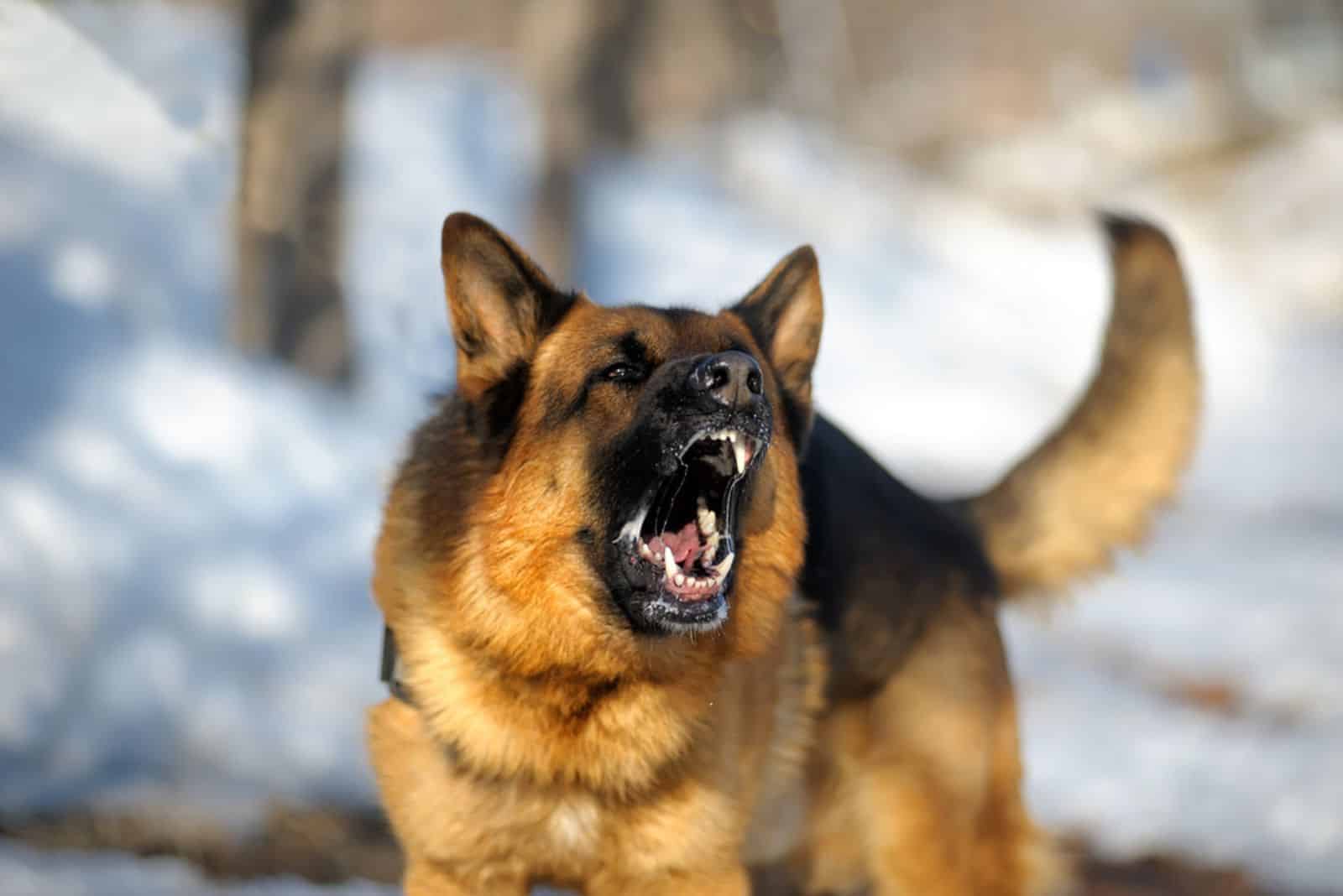
Just like Huskies, Labradors, and Chi puppies – GSDs are also extremely clingy dogs. Generally, GSDs that are socialized from an early age love spending time with their owner and being around their owner.
Therefore, puppies that are left alone for more than several hours during the day are highly likely to develop separation anxiety.
These high-energy dogs deal with separation anxiety in a bad way as they become self-destructive or even aggressive. This sort of behavior is not only characteristic of puppies, but of older dogs, too.
Getting professional help from experienced dog behaviorists is highly recommended in this regard.
4. Lack of Socialization
Last, but not the least – lack of socialization is a serious problem in all GSDs. Any dog owner should remember one thing – dogs are not wolves, which means that despite their territorial behavior and territorial aggression, they crave socialization!
This process starts right after you pick up the puppy from a litter. Otherwise, socializing an aggressive dog will be a much harder job.
GSDs that lack socialization are highly likely to display aggressive behavior towards strangers, unknown people, and even some family members. Despite the fact that GS puppies learn quickly, they also don’t have naturally high-developed social skills.
Conclusion
There are several German Shepherd signs of aggression that clearly indicate your dog is being aggressive. Even though it may not be a direct cause of aggression, some GSDs display those behavioral patterns during times of frustration, fear, trauma, and anxiety.
Recognizing these signs is the number-one step towards addressing aggression in your GSD. If, however, you’re unable to deal with this issue – the advice is to get help from a dog trainer or a dog behaviorist!
Read more: A German Shepherd Barking: The Perfect Guide to Train Your GSD
